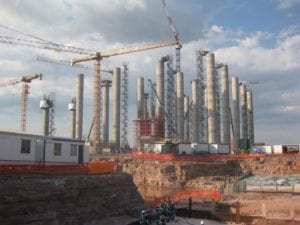Most South Africans are oblivious to the fact that we are in the worst grip of a crisis that has major negative implications for every one of us both now and in the future. People are ignorant of the electricity crisis because “the lights are still on”.
But the lights will not stay on. Eskom’s daily message to us all is to use less electricity. It has even resorted to paying large users to sell electricity back to Eskom in its efforts to have some available for the rest of us to use. Essentially, the cause of the electricity crisis in SA is two-fold. Firstly, it’s the result of government’s failure to implement its own policies as contained in the 1998 energy white paper, and, secondly, it’s the result of sabotage, often by acts of omission, by certain parties due to their ideological and/or vested interests. In 2004, the SA government recognised that a crisis was pending and urgently instructed the state-owned monopoly Eskom to build new power stations. This may have been construed to be in conflict with a previous decision to restructure the electricity supply industry and to introduce independent power producers, but this was not the case. Putting that decision into operation was simply postponed, the decision was not reversed. Eskom was mandated to increase generation capacity as quickly as possible. The-then Eskom CEO Thulani Gcabashe stated in an interview that “speed is of the essence”. At this point the responsibility and accountability to implement the proposed plan and avoid the impending crisis was Eskom’s. About five months later, in May 2005, Gcabashe announced that Eskom would introduce “a new brownfields extension to the coal-fired Matimba power station in the Limpopo province, probably by an additional unit … that can deliver by 2010”. This announcement included no detail regarding the actual size or cost forecast. However, after a request for information, Eskom responded that the initial expansion would entail an additional 660MW unit and that this would be commissioned in mid-2010 (a delay of six months) — again no cost was mentioned. Eventually, in March 2006, a budget price of R17 billion to R20 billion was quoted for an 1 800MW expansion (ie. an initial budget of between R9.4m/MW and R11,1m/MW). Over the next nine months, a number of changes were made to the size, budget and commissioning date and, in January 2007, a ‘six-pack’ 4 500MW station (Medupi) was announced, at a cost of over R52 billion and with the first unit to be commissioned in mid-2011. This price was firmed up at R56bn in February 2007 (ie. a budget of R12.44m/MW and an overall delay of 18 months). In late February 2007, Eskom executive Brian Dames (now Eskom CEO), announced a budget increase to R70bn. A mere three months later, the-then CEO of Eskom, Jacob Maroga, announced that the cost would be only R66bn (ie. a budget of R14.67m/MW). What became evident was that speed and, to a lesser extent, cost was being sacrificed at the expense of size — contrary to the initial strategic intent of building extra capacity as quickly as possible.In October 2007, Eskom announced that the expansion would now consist of a 4 700MW station (increased to 4 800MW in the same month), costing R78,6bn, with the first unit to be commissioned before the third quarter of 2011 (a budget of R16.37m/MW and an overall delay of 24 months). Between October 2007 and March 2011, the budget leapt from R78.6 billion to R120 billion to R124.42 billion to R125.5 billion and the commissioning date for the first unit shifted from September 2011 to June 2012 (a budget of R26.15m/MW and an overall delay of 30 months).
At this stage, Eskom announced that it would no longer include interest during construction in the pricing. Overnight, the budget cost dropped to R98,9bn and, after revision, to R91.2 billion. Meanwhile, the commissioning date for the first unit continues to move — from June 2012 to September 2012 to March 2013 to January 2013 to June 2013 and to December 2013. As at the end of July 2012, the size of Medupi is 4 764MW, the cost R91.2 billion excluding interest during construction and the forecast commissioning date for the first unit is December 2013. Industry experts estimate that the full cost, including interest during construction, will exceed R130bn. This amounts to a budget price of R27.29m/MW and an overall delay of 48 months. The initial cost estimate for a small 1 800MW expansion was R17bn to R20bn or an average of between R9.4m/MW and R11.1m/MW. Extrapolating this for a 4 764MW station gives a cost of R52.9 billion as opposed to the expected cost of R130bn. That is an effective cost overrun of R77.1 billion! The original date for production by Medupi’s first unit was January 2010; it is now January 2014. Due to all the delay, Eskom will lose more than four years of revenue from a 4 764MW station, which amounts to about 86bn kWhs of energy. At a conservative figure of 50c/kWh, this is a loss of R43 billion in revenue that could have been used to offset electricity price increases. The cost of unserved energy to the economy (the losses suffered in the economy due to unavailability of energy) is R75/kWh. Given that 86bn kWhs were unserved, we can estimate the total cost to the economy was R6,45 trillion. This is an amount of money that the majority of people simply cannot comprehend. It is equivalent to 129m RDP-sized houses, which would provide more than two for every single South African. Given these historical facts, how can Eskom’s spokesman suggest that “the project costs for the Medupi and Kusile coal-fired power stations have not increased” and that “the power utility’s build programme is also on track”? And why was Eskom allowed to stray so far from its strategic mandate to “add additional capacity as fast as possible”? How can Eskom be entrusted with the stewardship of the electricity supply industry (as a monopoly) or to build any further capacity? To overcome these and all other obstacles in the SA electricity market, the industry must be restructured. Independent power producers must be given the opportunity to access the grid to compete for business and wheel electricity to consumers. This essential first step will liberate the market. Consumers will be able to choose their supplier and benefit from lower electricity prices, and supply of the power the whole country needs will be more certain. Source: Tech Central






